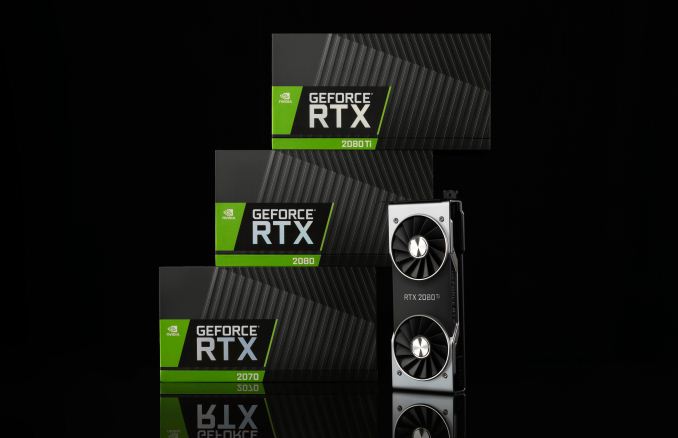The NVIDIA Turing GPU Architecture Deep Dive: Prelude to GeForce RTX
by Nate Oh on September 14, 2018 12:30 PM ESTClosing Thoughts
With a tagline like ‘Graphics Reinvented’, NVIDIA is certainly not straying from putting Turing in the most revolutionary limelight as possible. In that sense, NVIDIA is choosing to compare Turing to Pascal rather than Volta for every possible circumstance, especially for gaming. This decision is certainly not unfounded because for consumers, the Turing-based GeForce 20-series succeeds the Pascal-based GeForce 10-series. However, this can give the impression that because Turing is so different from Pascal, it warrants dissimilar comparisons like RTX-OPS metrics or gaming performance uplifts with DLSS or raytracing enabled.
The situation becomes a little more muddled because of several reasons:
- The pricing and availability of the RTX 20-series means that on a purely market segmentation level, it does not directly replace Pascal gaming products
- As gaming-focused cards, the major new features (RT cores, tensor cores, advanced shading) of the RTX 20-series do not operate out-of-the-box in games, are specific to select games, and
- The burden of communication is on the developers to educate consumers on the details of specific raytracing effects or use of AI-accelerated denoisers
These aren’t points that necessarily need to define Turing, except that NVIDIA has pushed the envelope by going all-in with marketing and branding. For their part, NVIDIA will have an continously updated list of games with RTX platform support.
On one hand, Turing seems like a possible solution to the gaming/compute architecture divergence. It seems less likely now that NVIDIA would backtrack into a more standard design for maximum rasterization performance, though obviously that remains to be seen with how the product fares. In any case, as most silicon design firms hvae leapfrogging design teams, the major decisions are likely not to move too far to the fixed function side, if only because the greatest strength of GPUs in compute is its programmability and versatility.
Looking back at ray tracing, it seems that even if it isn't immediately practical, there would still be a seeding effect to be gained via enthusiasts and certain gamers, which would work well with higher-profile AAA games. As we move into next week, it appears that the GeForce RTX 20-series is definitely one of the more nuanced graphics products, with both caveats and potential.

















111 Comments
View All Comments
Wwhat - Wednesday, October 17, 2018 - link
What the article ignores is that ray tracing went through a long revolution, and one of the findings at one point for example was that triangles weren't covering the need for advanced ray-tracing, after which things like NURBS were thrown into the mix.My point being that you would think the RT for gaming development would not start from point A and slowly meander to all the evolutionary steps with constant hardware updates. But it's not clear at the moment if the Nvidia team is 'keeping it simple' for now in their package, or if that's just how it is presented for easy presentation to the crowd.